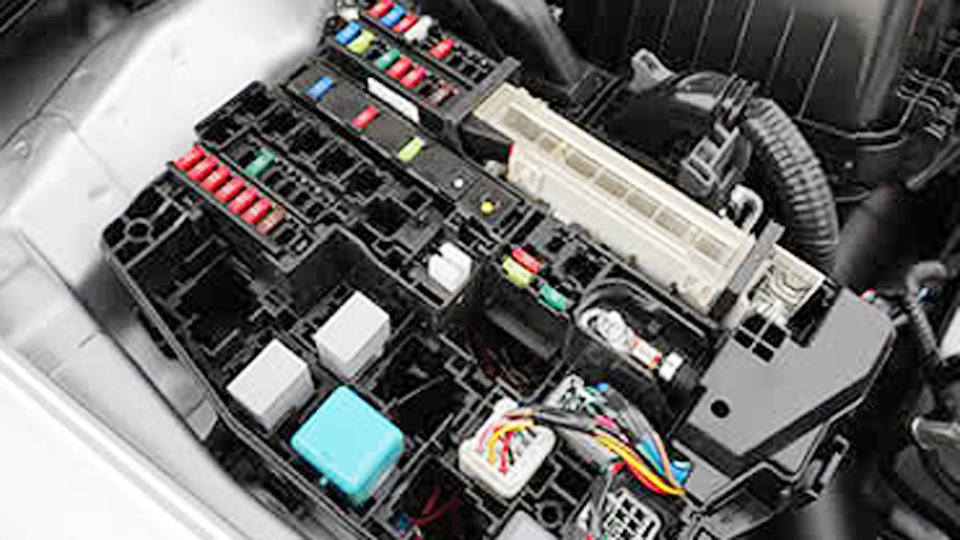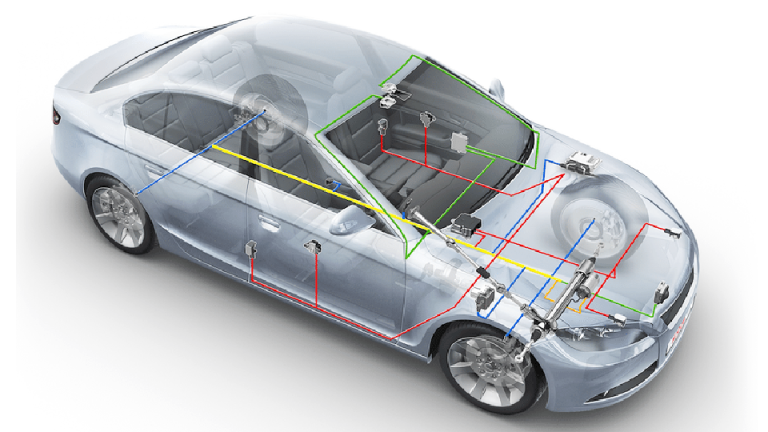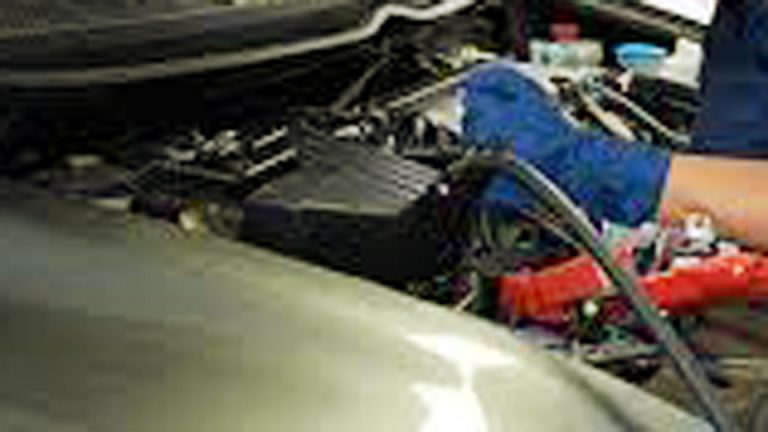As a gearhead who’s spent years elbow-deep in engine bays, I can tell you that understanding how does automotive electrical system work? is like learning the nervous system of your car. It’s the backbone that powers everything from your headlights to your ignition, and when it fails, you’re stuck.
Whether you’re a DIY mechanic tinkering in your garage, a car owner trying to avoid costly repairs, or an auto student diving into the trade, knowing the ins and outs of your vehicle’s electrical system is critical. It impacts safety, performance, and reliability—plus, it can save you hundreds on repairs if you catch issues early.
In this guide, I’ll walk you through the automotive electrical system like we’re troubleshooting a car together in my shop. We’ll cover what each key component does, common problems, replacement tips, OEM vs aftermarket parts, and real-world insights from years of wrenching. Expect practical advice, step-by-step guides, and a few stories from the garage to keep it real.

Image by supercheapauto
Why Your Car’s Electrical System Matters
Your car’s electrical system is the unsung hero behind every start, every light, and every gadget. Without it, your vehicle is just a hunk of metal. A faulty electrical system can lead to dim headlights (a safety hazard), a dead battery (stranding you), or even engine misfires that tank performance and fuel efficiency.
Replacing parts like alternators or wiring harnesses can cost anywhere from $200 to $1,500 in the US, depending on the vehicle and labor. Regular maintenance and catching issues early can save you from these headaches and keep your car reliable.
What Is the Automotive Electrical System?
The automotive electrical system is a network of components that generates, stores, and distributes electricity to power your car’s functions. Think of it as the car’s nervous system, sending signals and power to everything from the starter motor to your infotainment screen. It’s a complex setup, but at its core, it’s about generating power, storing it, and delivering it where needed.
Key Components of the Electrical System
Here’s a breakdown of the main players:
- Battery: The heart of the system, storing electricity to start the engine and power accessories when the engine’s off.
- Alternator: The power plant, generating electricity to charge the battery and run systems while the engine’s on.
- Starter Motor: Cranks the engine to get it running.
- Wiring Harness: The “veins” that carry electricity to every component.
- Fuses and Relays: Safety devices that protect circuits from overloads.
- Sensors and Control Modules: Brains like the ECU (Engine Control Unit) that manage everything from fuel injection to climate control.
Each part has a specific role, and when one fails, it can cascade into bigger problems. For example, a weak battery might overwork the alternator, leading to both needing replacement.
Common Problems and Signs of Failure
In my years as a mechanic, I’ve seen electrical issues cause everything from no-starts to flickering dashboards. Here are the red flags:
- Battery Issues: Dim headlights, slow cranking, or a dashboard battery warning light. A dead battery might mean it’s old (3–5 years is typical lifespan) or the alternator isn’t charging it.
- Alternator Failure: Whining noises, dimming lights while driving, or a burning smell. I once had a customer’s Ford F-150 stall because the alternator died mid-trip.
- Starter Problems: Clicking sounds when turning the key or no response at all.
- Wiring Issues: Burnt smells, intermittent power loss to accessories, or blown fuses. Faulty wiring in a Chevy Silverado I worked on caused the radio and power windows to cut out randomly.
- Sensor/Module Failure: Check engine light, erratic idling, or loss of features like cruise control.
When and Why Replacement Is Needed
Replace components when they fail or show consistent issues. A battery that won’t hold a charge after a jumpstart is done for. An alternator outputting less than 13.5 volts (check with a multimeter) needs swapping. Wiring harnesses get replaced if insulation is frayed or connectors are corroded—common in older vehicles or those in salty, wet climates like the Northeast US.
Ignoring these issues can lead to breakdowns, reduced fuel efficiency, or even fires in extreme cases. I’ve seen a Dodge Ram’s melted wiring harness cause a $2,000 repair because the owner ignored a burning smell for weeks.
OEM vs Aftermarket Parts
When replacing electrical components, you’ll face the OEM (Original Equipment Manufacturer) vs. aftermarket debate. Here’s a comparison table based on my experience:
| Component | OEM Pros | OEM Cons | Aftermarket Pros | Aftermarket Cons |
|---|---|---|---|---|
| Battery | Perfect fit, reliable (e.g., Motorcraft for Ford) | Expensive ($150–$300) | Cheaper ($80–$200, e.g., Duralast, Optima) | Shorter lifespan, variable quality |
| Alternator | Vehicle-specific, long-lasting | High cost ($300–$600) | Affordable ($100–$400, e.g., Bosch, ACDelco) | May not match OEM output or durability |
| Starter Motor | Guaranteed compatibility | Pricey ($200–$500) | Budget-friendly ($100–$300) | Risk of poor fit or premature failure |
| Wiring Harness | Exact fit, high-quality materials | Costly ($500–$1,500) | Lower cost ($200–$800) | May require modifications, less durable |
For critical components like alternators or wiring harnesses, I lean toward OEM for reliability, especially on newer vehicles (e.g., a 2020 Toyota Camry). For batteries, aftermarket brands like Optima or Interstate are solid if you’re on a budget. Always check compatibility—aftermarket parts for a Jeep Wrangler might not handle off-road vibrations as well as OEM.
Installation Tips and Common Mistakes
Battery Replacement:
- Tools: Wrench set, battery terminal cleaner, gloves.
- Steps: Disconnect negative terminal first, then positive. Remove old battery, clean terminals, install new battery, connect positive first, then negative.
- Mistake to Avoid: Mixing up terminals—negative to positive can fry your ECU. I’ve seen this ruin a $1,200 module on a Honda Accord.
Alternator Replacement:
- Tools: Socket set, belt tensioner tool, multimeter.
- Steps: Disconnect battery, remove serpentine belt, unbolt alternator, swap in new unit, reconnect belt and battery. Test output (13.5–14.5 volts).
- Mistake to Avoid: Over-tightening the belt can damage bearings. I once had to redo a job on a Chevy Malibu because of this.
Safety Tip: Always disconnect the battery before working on electrical components to avoid shocks or short circuits.
Anecdote from the Shop
Last summer, a customer rolled in with a 2015 Nissan Altima that wouldn’t start. The battery was only a year old, so I checked the alternator—output was a measly 12 volts. A quick replacement with an OEM Denso alternator fixed it, but the customer had been driving with dim lights for weeks, thinking it was “normal.” That’s a classic case of ignoring warning signs, and it could’ve stranded them on a highway.
How the Battery Powers Your Car
The battery is your car’s power reservoir, storing electricity to start the engine and run accessories like lights or the radio when the engine’s off. Most cars use a 12-volt lead-acid battery, though hybrids and EVs use lithium-ion or nickel-metal hydride packs.
Common Battery Problems
Batteries die from age, extreme temperatures, or parasitic drains (e.g., a glovebox light left on). Signs include slow cranking, dim lights, or a dashboard warning. In cold states like Minnesota, batteries fail faster due to freezing temps. I’ve replaced countless batteries in Subarus during Midwest winters.
When to Replace a Battery
Replace every 3–5 years or if it fails a load test (most auto parts stores like AutoZone do this free). A battery that drops below 12.2 volts when off is suspect. Don’t wait for a no-start—proactive replacement saves you from being stranded.
OEM vs Aftermarket Batteries
OEM batteries (e.g., Motorcraft for Ford, ACDelco for GM) are reliable but pricey. Aftermarket options like Optima RedTop or Interstate are great for performance vehicles or budget builds. Check cold cranking amps (CCA)—a 600 CCA battery won’t cut it for a V8 Dodge Charger in winter.
Installation and Maintenance Tips
- Clean Terminals: Use a wire brush and baking soda solution to remove corrosion.
- Secure the Battery: A loose battery can vibrate and crack, especially in trucks like the Ford F-150.
- Check Charging: After installation, ensure the alternator charges at 13.5–14.5 volts.
- Mistake to Avoid: Leaving old corrosion on terminals reduces conductivity. I’ve seen this cause intermittent starting issues on a Toyota Corolla.
Spotting Fake Batteries
Counterfeit batteries flood the US market, especially online. Look for:
- Misspelled brand names (e.g., “Optima” vs. “Optina”).
- No warranty card or serial number.
- Suspiciously low prices (a $50 “Optima” is a red flag).
Buy from trusted retailers like Advance Auto Parts or O’Reilly to avoid fakes.
The Alternator: Your Car’s Power Generator
The alternator keeps your battery charged and powers electrical systems while the engine runs. It converts mechanical energy from the engine into electricity via a spinning rotor and stator.
Signs of Alternator Failure
A failing alternator shows up as dimming lights, a whining noise, or a battery warning light. I once diagnosed a bad alternator on a Honda Civic when the customer complained of a “weird hum” under the hood.
When to Replace an Alternator
Replace if it outputs less than 13.5 volts or fails a bench test (AutoZone or NAPA can test it). Driving with a bad alternator drains the battery and can stall your car.
OEM vs Aftermarket Alternators
OEM alternators (e.g., Denso for Toyota, Bosch for European cars) are pricier but reliable. Aftermarket brands like ACDelco or Remy are decent but check amperage ratings—too low, and it won’t power a loaded system (e.g., aftermarket stereos).
Installation Tips
- Tools: Socket set, belt tensioner, multimeter.
- Steps: Disconnect battery, release belt tension, unbolt alternator, install new unit, retension belt, reconnect battery.
- Mistake to Avoid: Incorrect belt routing can cause slippage. Always check the belt diagram (usually on a sticker under the hood).
Maintenance Best Practices
- Inspect belts for cracks every 30,000 miles.
- Clean alternator connections to prevent corrosion.
- Avoid overloading with aftermarket accessories—too many amps can burn out a stock alternator.
Wiring Harnesses: The Car’s Electrical Veins
Wiring harnesses are bundles of wires that carry power and signals throughout the vehicle. They’re like the circulatory system, connecting every component.
Common Wiring Issues
Frayed insulation, corroded connectors, or rodent damage (yes, rats love chewing wires) cause shorts or power loss. I fixed a Chevy Tahoe where chewed wires killed the power windows.
When to Replace a Wiring Harness
Replace if you see exposed wires, melted insulation, or frequent blown fuses. Partial repairs (splicing) work for minor damage, but a full replacement is best for extensive issues.
OEM vs Aftermarket Harnesses
OEM harnesses fit perfectly but cost a fortune. Aftermarket harnesses are cheaper but may need trimming or custom connectors, especially for older vehicles like a 1990s Mustang.
Installation Tips
- Tools: Wire strippers, crimping tool, electrical tape, multimeter.
- Steps: Disconnect battery, remove old harness, route new harness, secure with zip ties, reconnect components.
- Mistake to Avoid: Poor grounding causes erratic issues. Ensure ground points are clean and tight.
Anecdote from the Shop
A customer’s Jeep Cherokee had intermittent electrical issues—lights flickering, radio cutting out. After hours of tracing, I found a corroded ground wire under the battery tray. A $10 fix saved them from a $500 harness replacement.
Fuses and Relays: The Safety Net
Fuses and relays protect circuits by breaking them during overloads. Fuses blow to stop current; relays control high-power components like fans or fuel pumps.
Common Problems
Blown fuses cause specific systems (e.g., radio, AC) to stop working. A bad relay might prevent the fuel pump from running, mimicking a bigger issue.
When to Replace
Replace blown fuses with the same amperage (check the fuse box cover). Relays need swapping if they click but don’t engage—test with a multimeter or swap with a known good relay.
OEM vs Aftermarket
OEM fuses and relays are reliable but overpriced. Aftermarket options from Bussmann or Littelfuse are fine for most vehicles.
Installation Tips
- Tools: Fuse puller, multimeter.
- Steps: Locate fuse box (usually under the hood or dashboard), pull blown fuse, insert new one.
- Mistake to Avoid: Using a higher-amp fuse to “fix” a blown one can cause fires. Always match the rating.
Conclusion
Your car’s electrical system is a complex but critical beast. From the battery to the wiring harness, each component plays a role in safety, performance, and reliability. By understanding how it works and watching for warning signs, you can avoid costly repairs and keep your vehicle on the road. When replacing parts, weigh OEM vs aftermarket based on your budget and vehicle needs. Always buy from trusted sources to avoid counterfeits, and double-check your work to prevent rookie mistakes.
Carry a multimeter in your toolbox. It’s your best friend for diagnosing electrical issues quickly and accurately.
FAQ Section
How do I know if my car’s battery is bad?
Test it with a multimeter (below 12.2 volts when off is bad) or get a free load test at AutoZone. Slow cranking or dim lights are also signs.
Can I use any alternator for my car?
No, it must match your vehicle’s amperage and mounting specs. Check your owner’s manual or consult a parts store for compatibility.
How do I spot a counterfeit battery?
Look for misspelled brand names, missing serial numbers, or prices too good to be true. Buy from reputable retailers like NAPA or Advance Auto Parts.
Why does my car keep blowing fuses?
A short circuit, often from frayed wiring or a faulty component, is likely. Trace the circuit with a multimeter or take it to a mechanic.
How often should I check my car’s electrical system?
Inspect the battery, belts, and connections every 6 months or 6,000 miles. Test alternator output yearly to catch issues early.


